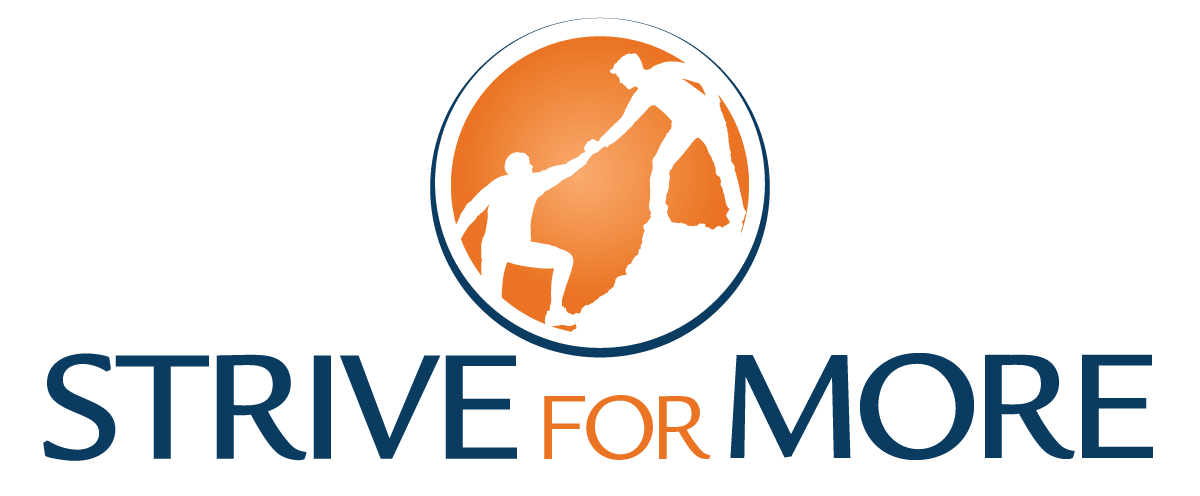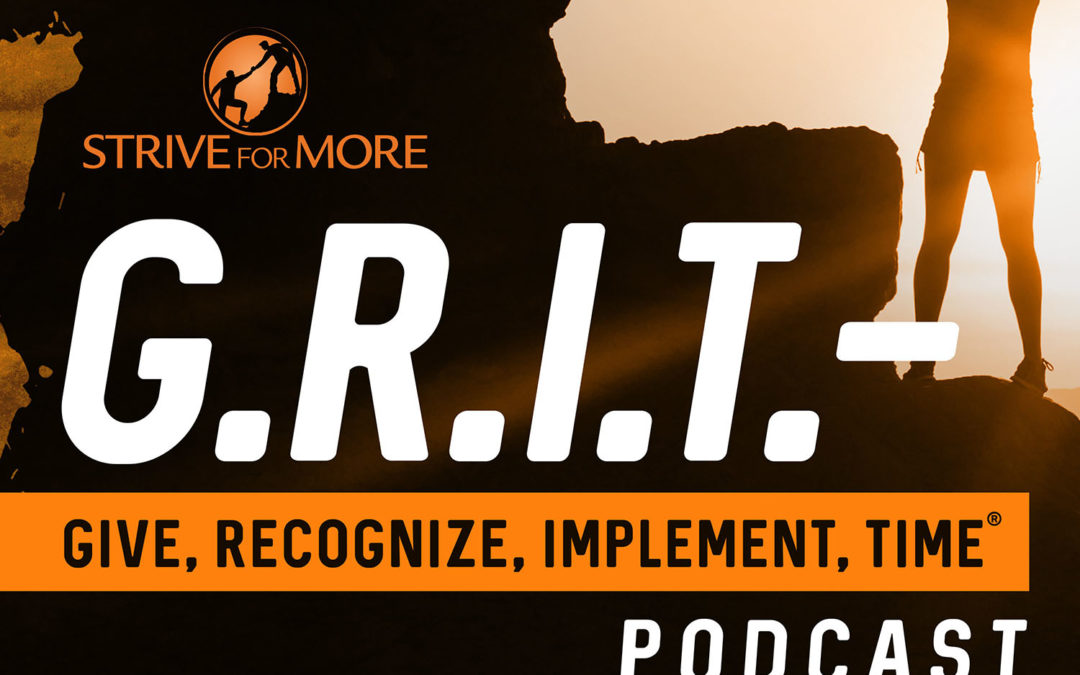Episode Transcript
Hello everybody. I’m Steven Nathenson, CEO and founder of Strive for More. I want to ask you a question. Do you find that you’re more focused on what’s going wrong than what’s going right? If you do, you’re definitively not alone. It’s very natural for us as human beings to focus on what’s going wrong, what we don’t like, what we don’t want. Or in other words, the problems that we have in life. But when we do that, we’re activating the sympathetic nervous system in our body that actually kind of keeps us down. It keeps us there. It doesn’t help us switch or overcome. It helps us remain in that non-serving state, focused on the problems that maybe create those downward spirals of thoughts that we’ve talked about before. One thought leads to another that leads to another, and then before we know it, we’re just flustered. We’re angry, we’re upset, and maybe we’ve blown our lid and maybe we’ve yelled at somebody we didn’t mean to.
When we get stuck in that trap, that downward spiral, there’s some real world consequences that can come out, not only for us, but for the people around us and impact them. It can happen in our personal lives. It can happen at work. But again, it’s a very common thing for us. Part of that is if we go back to school and the way that we’re taught, we’re very much taught to focus on problems. So if we think about say math and science for a second, what’s your problem statement? What are you trying to solve for? Right? You’ve got train A going this way. You’ve got train B going this way. If they’re traveling at different speeds, when are they going to connect? What is our problem statement? What are we trying to solve for? It’s really how we’re trained and we’re taught to think. So it’s very natural for us to extend that into other areas of our lives as well, and be focused on the problems at hand, the challenges, the hurdles, the obstacles that we have.
Another thing that I’ve read is that there’s approximately three times as many words in the English language to describe negatives than there are positives. So let’s take that at face value and take that as true. With that being the case, language-wise, we’re already set up for a lot more ease to describe what we don’t like, what we don’t want, the problems we’re facing. If you’ve ever been around someone who you characterize this just always complaining, and I’ll say and admit, I’ve been that person in my life. When I was employed in a field that I really wasn’t passionate about and I was not happy, that was me. I was very focused on the problem at hand. I don’t like being an engineer and I don’t want to work as an engineer for 30 or 40 years, right? It came out as just a constant complaint from me, because I was very problem focused.
But there’s a way to shift out of that. How do we do that? We focus on solutions instead, what we want, our desires, our goals. There’s an added benefit there because just like with problem focus, solution focus activates the parasympathetic nervous system, the opposite nervous system, and that uplifts us. It has a physiological impact on our bodies that literally make us happier. It is much stronger of a way to truly bring about what we want because we know what’s in it for us. We know what we want to achieve. We’re physiologically setting ourselves up for success by focusing on what we want, the solutions, versus what we don’t want, the problems.
In my life, I often talk about the transitions that I’ve gone through in my career. One of those was going from an engineer to being a special agent with the FBI. When I was in school, I was very problem focused. I don’t want to do this. I don’t like this. What else am I going to do? I put it off, right? Because I didn’t know what else to do. I was so focused on the problems at hand that I couldn’t get out of that, and that’s what caused me to be unhappy. That’s what’s caused me to complain. But I knew when I started actually working professionally as an engineer after college that I had my sights set on becoming a special agent with the FBI. Even though I knew what I wanted, it was definitely hard to focus on that because it was so far off in the future for me. I didn’t know if it was going to happen.
So more often or not, I found that I was in that problem focused mindset and I saw it play out in the way that I complained to my friends. I was constantly negative and down. That’s not a whole lot of fun to be around. But when it started becoming more real, I became eligible. It was possible. I was going through that process, right? There’s that switch that happened because I was very much now focused on, hey, this is a real possibility and this is what I’m focusing on. I’m going to drive this home and make sure this happens. I did everything I could to set myself up for success, knowing that I was focused on what I truly wanted, which was becoming a special agent with the FBI. There was a switch in my mindset that played out in my life, not only internally with the way that I thought, the way that I felt, but also the way I interacted with my friends at the time.
It was because of that switch, focusing on the solutions, what we want, my desires, and it is a stronger driver to truly make that happen versus getting sucked in that problem focus because when we do that, it’s hard to see that something is possible and that we can achieve it. So there’s a lot of benefits in switching to focusing on solutions versus problems. Why is that so important for us when we talk about Recognize, and recognizing we always have a choice in our signature cognitive behavioral coaching approach of G.R.I.T here at Strive for More? The answer is it’s a fundamental thing that’s going to help us achieve success. It is a choice. I can choose to focus on the problems or I could choose to focus on what I want. That choice is always there for us and it is always ours to make.
I can choose to focus on what I want, what I desire, what I want to accomplish, the goals, instead of focusing on what I don’t like, what I don’t want, what’s going wrong. That choice is always there. Question is, what am I going to focus on? Because when we recognize that we have a choice and it is always there for us to make, it is easier for us to then focus on achieving what we actually want because we’re mentally setting ourselves up for success by choosing those solutions, those desires, those goals, over the problems, the challenges, the hurdles, the obstacles that we’re facing. That’s why it’s such a critical part of Recognize in G.R.I.T because that choice is always there and we can make it, and we could set ourselves up for success by focusing on solutions, instead of problems.
One thing I want to leave you with is a little trick. As I said, we are naturally inclined today to really kind of focus on the negative, the non-serving versus the positive, the serving. It’s often a lot easier for someone to characterize what they don’t like say versus what they do like. So here’s a little trick. If I can’t answer that, if you can’t answer that, how do we figure that out? Well, one place to start literally is just to say, “Well, what don’t I want? What don’t I like?” Because the beauty in that is once you create that list, which is a lot easier, flip it. If you know what you don’t want, literally flip it, and now you do know what you want.
In that, one other note I’ll make. When we come to language and processing language, we don’t really process negatives. I think we’ve talked about this before, but if I say, “Don’t be nervous,” I actually am still focused on being nervous in order to think about not being nervous. So when I say, “Flip it,” and I’ve written out, “I don’t want to be nervous. How can I make that into a positive? I want to be calm.” I’ll make that a little bit clear. So if I say, “I don’t like being nervous.” Right? That’s something that I don’t like, I don’t want and I want to flip that. Well, what do I want to be? I could say, “I don’t like being nervous.” I could say, “I don’t want to be nervous, but what’s better is I want to be calm. I want to be relaxed. I want to be put together, let’s say.”
Coining the positive, the serving is going to be right in line with the solution. What is it that I actually truly want? It’s going to uplift us not only from the standpoint of activating the right nervous system in our bodies, but it also helps the thought process because now I’ve eliminated having to think about being nervous in order to think about not being nervous. So those are actually just a couple of key tricks that I use with clients all the time to help us figure out how to really bring awareness around where’s my mentality. Is it problem focus? Is it solution focus? Then how do I start flipping that? So I hope you enjoyed today. I want to leave you with those tips because they are truly powerful insights to help us create that awareness, flip that script, and start focusing on the solutions that are truly going to make us successful. So until the next time. Be the movement in your life.
Listen to all of our episodes here.
Learn More About G.R.I.T. – Give, Recognize, Implement, Time®& Find More Actions You Can Take Right NOW!
To learn more about our signature coaching approach which DOES help people all over the world stay focused, overcome, and achieve, please click here.
Want to Assess Your G.R.I.T. – Give, Recognize, Implement, Time® & get a tangible gauge of key human characteristics that WILL make you successful?
Take our G.R.I.T. – Give, Recognize, Implement, Time assessment now and find out!

